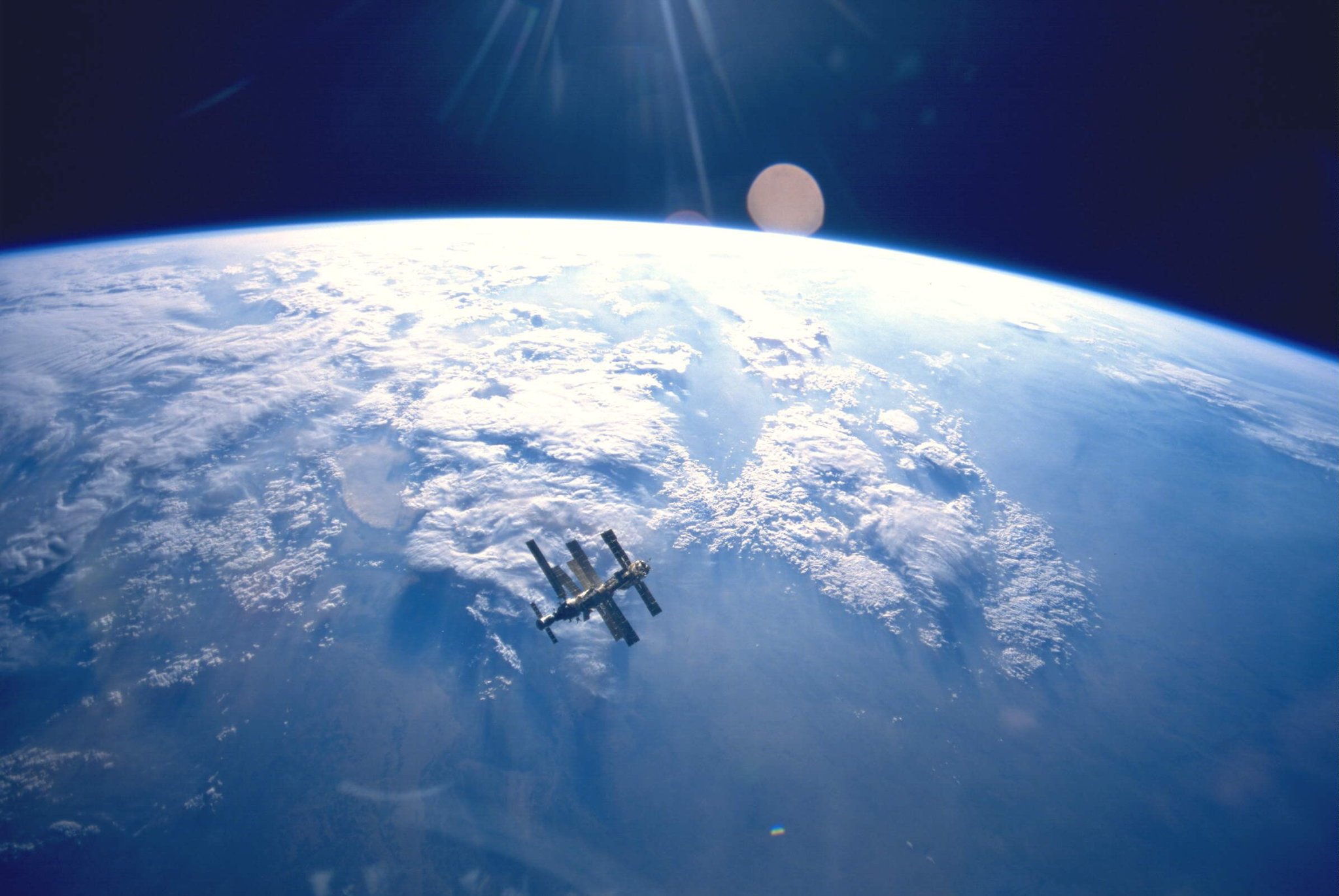

On February 20, 1986, a Proton rose off its launchpad in Kazakstan bound for low Earth orbit. Its payload was a module designated 17KS, known better as the core stage of the Mir space station. In the 15 years that followed, modules were added and rearranged, prompting some to liken history’s first modular space station to a Tinker Toy. But however non-traditional it was at the time, a lot can be gleaned from its name. “Mir” roughly translates to “peace” or “world,” but a more nuanced is the translation of “village.” If the Americans and Soviets behind their space programs are a village, Mir brought everyone together for the sake of the mission.
Mir’s story begins in 1976 with a Soviet pledge to improve on the Salyut space station program. Like the American Skylab, Salyut was a single module station such that all experiments and systems had to be launched ready to go inside the monolithic structure. Once in orbit, there was no real way to resupply these stations or add additional modules to extend their capabilities in orbit. But both the Americans and the Soviets knew this would be a valuable capability, not to mention a means to build a bigger, more complete space station for a larger mission; Wernher von Braun was among the first proponents of constructing a space station in orbit as early as the 1950s. Mir became the first proof-of-concept of this novel idea.
The core module of Mir reflects its early history as part of Salyut. The module is similar to the Salyut-6 and Salyut-7 space stations but different in one key respect: internal clutter. The now model for a space station had additional capabilities and research stations added with every new module, so the core wasn’t cluttered. Where Salyut was packed with instrument sections and payload, Mir’s core featured two small crew cabins.

From there, modules made Mir bigger and more capable. On April 12, 1987, the Kvant-1 docked to the core module, adding instruments to measure electromagnetic spectra and x-ray emissions of distant galaxies, quasars, and neutron stars to the growing station. This module also housed an attitude control system using gyrodines rather than propellant-fed reaction controls, making the whole station far more maneuverable. A second Kvant module, Kvant-2, brought a second set of gyrodines to Mir on December 6, 1989, as well as an airlock for simpler spacewalks, a jetpack akin to NASA’s Manned Maneuvering Unit, and a new life-support system capable of recycling water and generating breathable oxygen. With this module, the station started becoming truly self-reliant, or at least more than it had been to this point.
The Kristall module was added next. When it docked on June 10, 1990, it gave Mir two androgynous docking ports that could accept both the Soyuz spacecraft and the Buran shuttle, though the latter never visited the station. Kristall did receive a different shuttle, though; it was the docking point for NASA’s space shuttle beginning in 1995. The final two pieces of Mir, the Spektr module and the Priroda module, were added in June of 1995 and April of 1996 respectively. By this time, the Soviet Union had fallen and Mir was owned and operated by the Russian Federal Space Agency.

Over the course of its decade under construction, Mir wasn’t empty. The first crew boarded while it was still just a core module in mid-March of 1986. From this first crew to when the last crew departed in 2000, Mir hosted 28 long-duration crews. These largely-Russian expeditions lasted about six months, with some cosmonauts launching with one crew and returning with another.
But there were also other nations on board through collaborative programs. Intercosmos ran from 1978-1988 and saw Mir host visitors from Warsaw Pact Nations, other socialist nations, as well as and pro-Soviet non-aligned nations. Euromir began in the 1990s as a collaborative effort between the Russian Federal Space Agency and the European Space Agency. The Shuttle–Mir Program was a collaboration between Russia and the United States that saw astronauts taking Soyuz rides to Mir and cosmonauts riding in space shuttles that docked with Mir via the Kristall module.
Mir far outlived its planned five year operational lifetime and ultimately hosted 125 cosmonauts and astronauts from 12 different nations on 17 expeditions. But technical problems and wear from age eventually took their toll. In November of 2000, the Russian government announced that Mir would be decommissioned and deorbited. On January 24, 2001, a Progress cargo ship loaded with fuel rendezvoused with Mir, then fired its engines to start the station’s controlled descent through the atmosphere. The station crashed in the South Pacific Ocean more than 1,500 miles from New Zealand.
There is a lot more to say about Mir, including some really interesting close calls and near disasters. Before you comment: I’m getting to those; rest assured! I just wanted to start off with an overview article! Sources: NASA; NASA; NASA; Russian Space Web; Universe Today.
